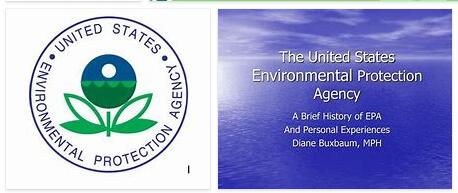The human and productive development of a large territory such as that of the United States has brought with it, since the arrival of the colonizers, a series of problems relating to the use of resources and the exploitation of the environmental heritage. United States is a country located in North America according to COMPUTERGEES.COM.
The country has undoubtedly lost the immense variety of flora and fauna that it possessed before the arrival of the Europeans, even if it has gradually become aware of the importance of safeguarding these riches. The forests – which in 2011 covered a third of the national territory – are managed at the federal level by an agency, the US Forest Service, which depends on the Department of Agriculture; this body has the task of promoting research and implementing forest and grassland protection policies. The intensive exploitation of soils, especially in the central plains, in the past it caused the loss of native ecosystems already tested by the killing of large mammals: the bison is now found only in protected areas. These same areas are marked by the impoverishment of the soils and the pollution of the aquifers caused by the massive use of pesticides and fertilizers. Other risks concern the scarcity of water resources, which has long affected the Western States, desertification and the increase in acid rain. These problems lead back to the broader issue of climate change and the impact of industrialization on the environment: the United States is a major contributor to carbon dioxide (CO killing of large mammals: bison is now found only in protected areas. These same areas are marked by the impoverishment of the soils and the pollution of the aquifers caused by the massive use of pesticides and fertilizers. Other risks concern the scarcity of water resources, which has long affected the Western States, desertification and the increase in acid rain. These problems lead back to the broader issue of climate change and the impact of industrialization on the environment: the United States is a major contributor to carbon dioxide (CO killing of large mammals: bison is now found only in protected areas. These same areas are marked by the impoverishment of the soils and the pollution of the aquifers caused by the massive use of pesticides and fertilizers. Other risks concern the scarcity of water resources, which has long affected the Western States, desertification and the increase in acid rain.
These problems lead back to the broader issue of climate change and the impact of industrialization on the environment: the United States is a major contributor to carbon dioxide (CO groundwater pollution caused by the massive use of pesticides and fertilizers. Other risks concern the scarcity of water resources, which has long affected the Western States, desertification and the increase in acid rain. These problems lead back to the broader issue of climate change and the impact of industrialization on the environment: the United States is among the largest emitters of carbon dioxide (CO groundwater pollution caused by the massive use of pesticides and fertilizers. Other risks concern the scarcity of water resources, which has long affected the Western States, desertification and the increase in acid rain. These problems lead back to the broader issue of climate change and the impact of industrialization on the environment: the United States is among the largest emitters of carbon dioxide (CO2) in the air in the world due to the use of fossil fuels, even if the figure is decreasing, from 20.2 t per resident. in 2004 at 17.6 in 2011. To counter the consequences of the greenhouse effect, the country has set itself the goal of reducing harmful gases by 18% in the period 2002-2012, through federal and state plans aimed at energy saving and use of clean and renewable sources such as biofuels, advanced nuclear technologies etc. These plans will not only be aimed at individual consumers, but will have to involve industries and businesses by means of tax incentives and other concessions. Programs aimed at making energy production and consumption more efficient, on the other hand, involve limiting the use of fossil fuels: oil is the largest source of energy consumed in the United States and covers 40% of needs, followed by natural gas, coal. and nuclear power while renewable sources make up only 6% of the total (2005). The reduction of methane emissions, which have already fallen by 10% in the period 1990-2003, implies instead an improvement in the management of industrial solid waste. On the subject of climate change, in 1998 the United States signed but not ratified the Kyoto protocol that establishes the targets for the reduction of greenhouse gases. In 2016, however, the Obama administration participated in and signed the agreements made at the Paris climate conference. In terms of safeguarding the environmental heritage, the country boasts an ancient and branched legislation. The first attempt to protect a portion of territory of ecological interest dates back to 1864, when the Yosemite Valley areas of Mariposa Grove of Giant Sequoias became, at the behest of President Lincoln, a public good of the State of California.
A few years later Yellowstone National Park was created (1872), the first of a series of protected reserves that initially arose mostly in the Western States, while in 1891 the Forest Reserve Act was drafted, the first document aimed at safeguarding a natural asset, the forests. With the establishment of the Pelican Island bird sanctuary in Florida (1903), the National Wildlife Refuge System (NWRS) project began, an organization aimed at the protection and conservation of flora and fauna which counted in 2008 ca. 540 shelters. The real federal system of national park management, the National Park Service (NPS), was born in 1916 at the behest of President Thomas Woodrow Wilson; dependent on the Department of Internal Affairs, the NPS, structured on the territory in the local offices of seven macro-regions, is in charge of the administration of about 400 between parks, reserves, monuments, memorials, historical sites, coastal areas, national battlefields. In the sixties and seventies of the twentieth century, under the pressure of ecological movements and according to the dictates of the nascent environmentalism, national legislation has diversified and the first pollution measures have been introduced. In 2015, the protected areas covered a total of 15.1% of the territory; the NPS is responsible for three types of natural, historic and equipped areas, which include national parks, monuments, reserves, banned, picnic areas, historic sites, historic parks, battlefields, coastal areas, lake shores, scenic trails, river areas and scenic and uncontaminated river areas, for a total of well over 2000 sites, including some managed by other institutions. L ‘ UNESCO has declared the following parks to be a World Natural Heritage Site: Yellowstone National Park (1978); Everglades National Park (1979); Grand Canyon National Park (1979); Kluane / Wrangell-Saint Elias / Glacier Bay / Tatshenshini Alsek National Parks (1979, 1992, 1994) shared with Canada, Redwood National Park (1980); Mammoth Cave National Park (1981); Olympic National Park (1981); Great Smoky Mountains National Park (1983); Yosemite National Park (1984); Hawaii Volcanoes National Park (1987); Carlsbad Caves National Park (1995); Waterton-Glacier National Park (1995) also co-managed with Canada; Papahānaumokuākea (2010), site of ecological and cultural interest.



